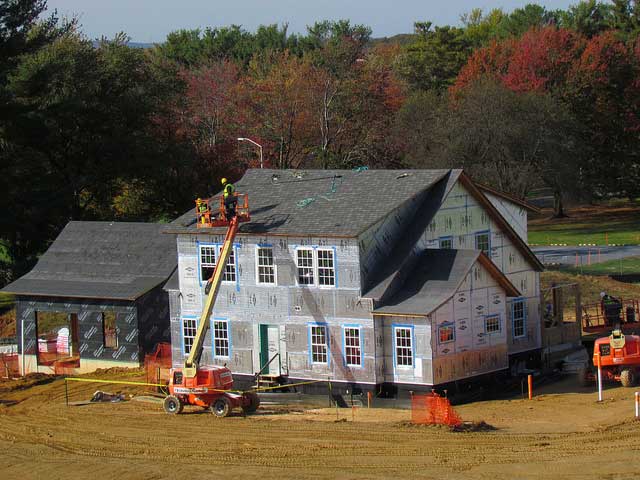I know what you’re thinking, how can a McMansion be green – especially with tiny homes becoming popular – and when you see the photo below you’ll be even more skeptical. Add in the $2.5 million price tag and it sounds like a bridge-to-nowhere disaster. But before you pass judgement let’s learn more about the home.
It’s a 2,700 square-foot house with two stories, four bedrooms, three bathrooms, and an oversized two-car garage. Not your average American home, more like something designed for a wealthy neighbor. And that fits because this home has the best green fixtures money can buy. The multi-million dollar price purchases:
- Configurable solar panels
- High thermal efficiency building materials
- Solar water heater
- Smart thermostat (rooms can have different temperatures)
- High velocity, insulated heating/cooling air system
- Humidifier/dehumidifier
- Ultra-efficient windows
- Full details – pdf, page 2
The design allows the National Institute of Standards and Technology to turn the home into a laboratory, where they will test all the features – with no one home. Lights will turn on in the morning and after work. There will be fake microwaving and fake cheering for a football team on the TV. Garage doors will open and close several times. All to simulate the energy use of a typical family of four.
All kidding aside, this is a serious scientific experiment, “buildings account for 40 % of the primary energy consumption and 72 % of the electricity consumption in the United States, while accounting for 40 % of the CO2 emissions…will develop and deploy the measurement science to move the nation towards net-zero energy, high-performance buildings in a cost-effective manner while maintaining a healthy indoor environment.”
It’s a great goal – to have net-zero energy homes – but why did they have to do their research on a McMansion?
Learn more about the home – Net-Zero Energy Residential Test Facility (NZERTF)
